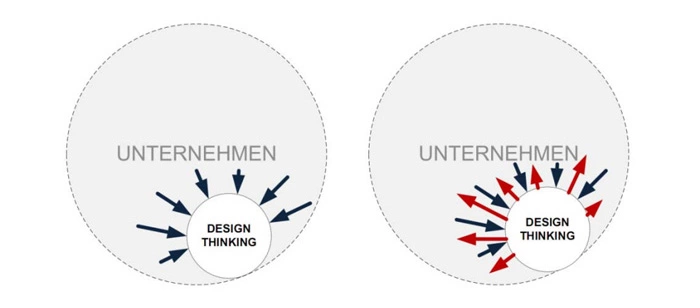Designing Innovation

Design Thinking has been increasingly associated with innovation in recent management literature. In this context, the term illustrates an indefinable construct, which has been understood and used in various ways. Despite the present terminological fuzziness, it can be declared that Design Thinking is inconsistent with the analytical thought and action patterns in major enterprises and their innovation processes. This work aims to uncover if and how Design Thinking affects the innovation skills of large-scale companies.
By analyzing theoretical works and empirical studies on the topics Design Thinking and innovation and by reflecting upon their interrelation, questions and tasks for an interview-guideline were developed. 15 experts from German-speaking countries, involved in research/science, consultancies/agencies and major enterprises, were asked to explain their personal notion of design thinking, the correlation between design thinking and innovation and how design thinking is implemented in enterprises. By means of a qualitative content analysis, a profound understanding of Design Thinking, its correlation with innovation and the practical use in large-scale enterprises, could be acquired.
This work is not able to fully define Design Thinking, although characteristic features could be found. In connection with innovation, Design Thinking tends to be advantageous in conceptual stages, whereas there are considerable disadvantages when it comes to implementation. For the latter, potentials at the interface of concept and implementation can be identified. The results reveal that Design Thinking does not primarily lead to innovation, but rather to ideas, concepts and prototypes. However, it has become apparent that, in the sense of a mindset, design thinking describes a certain culture in major enterprises, which is conductive to the evolution and development of innovative ideas and therefore affects indirectly the innovation skills of large companies.
References
Download Thesis Hasso-Plattner-Institute PotsdamFeedback
Back to top